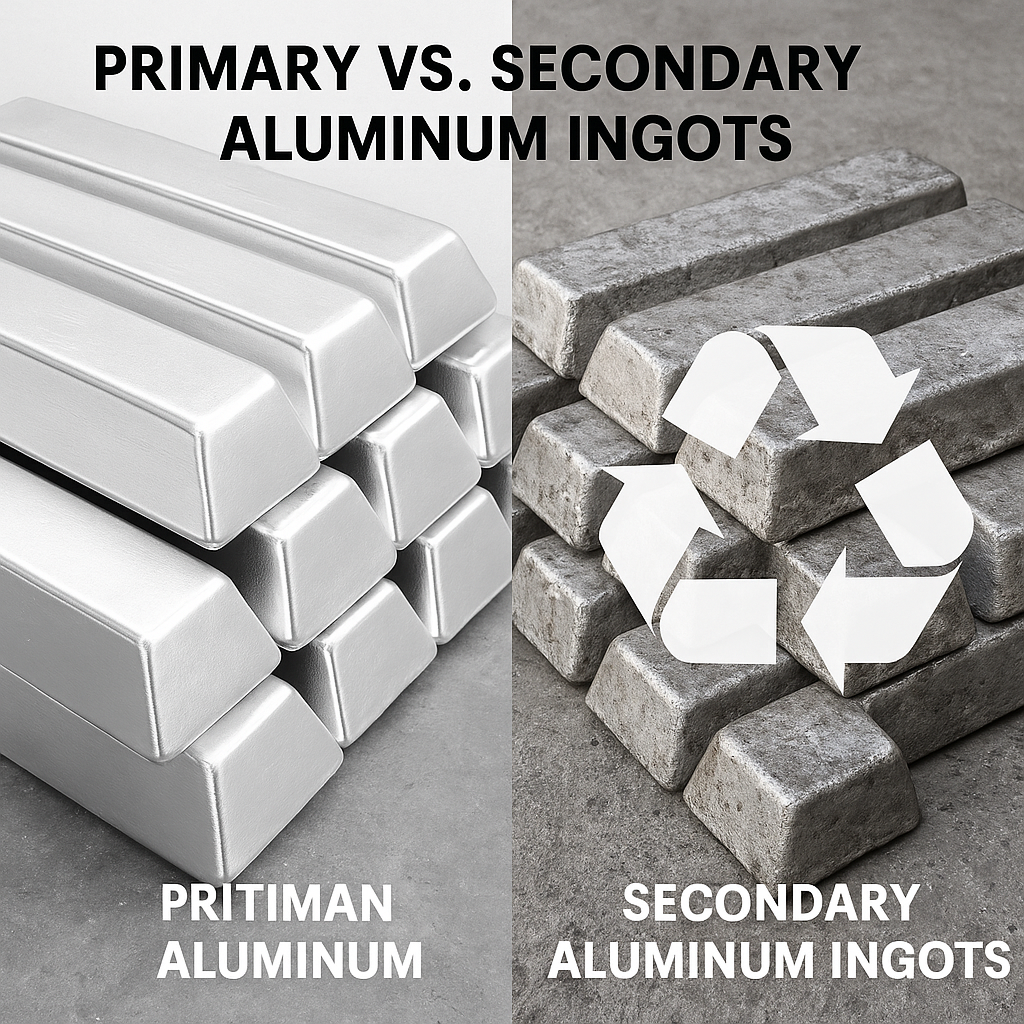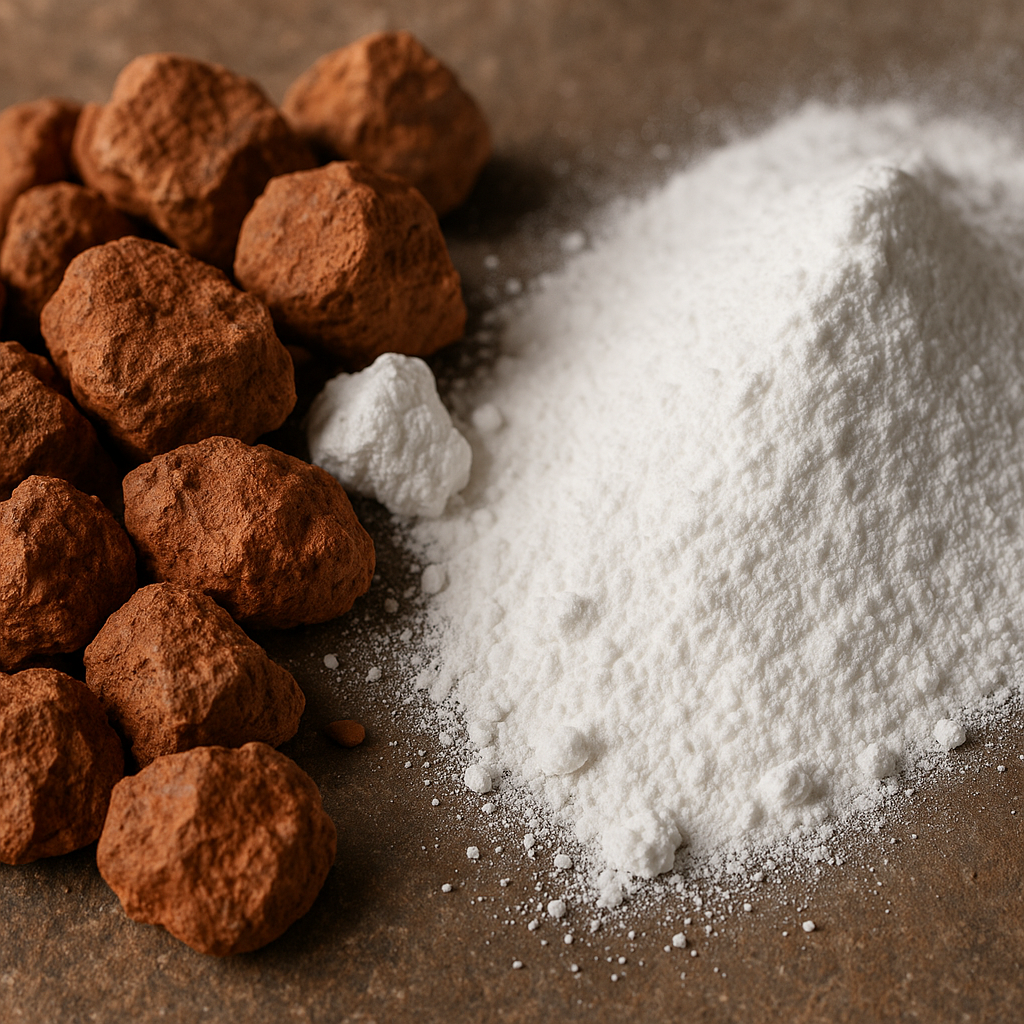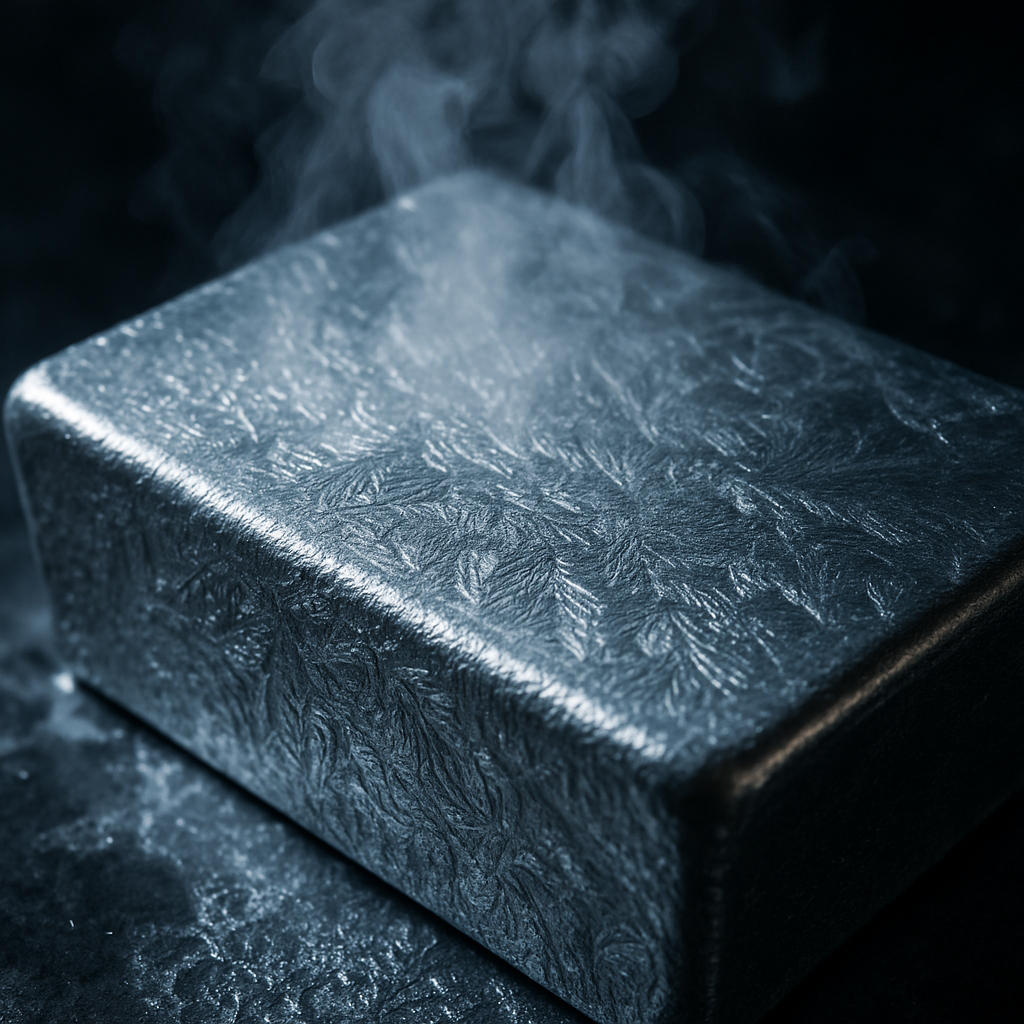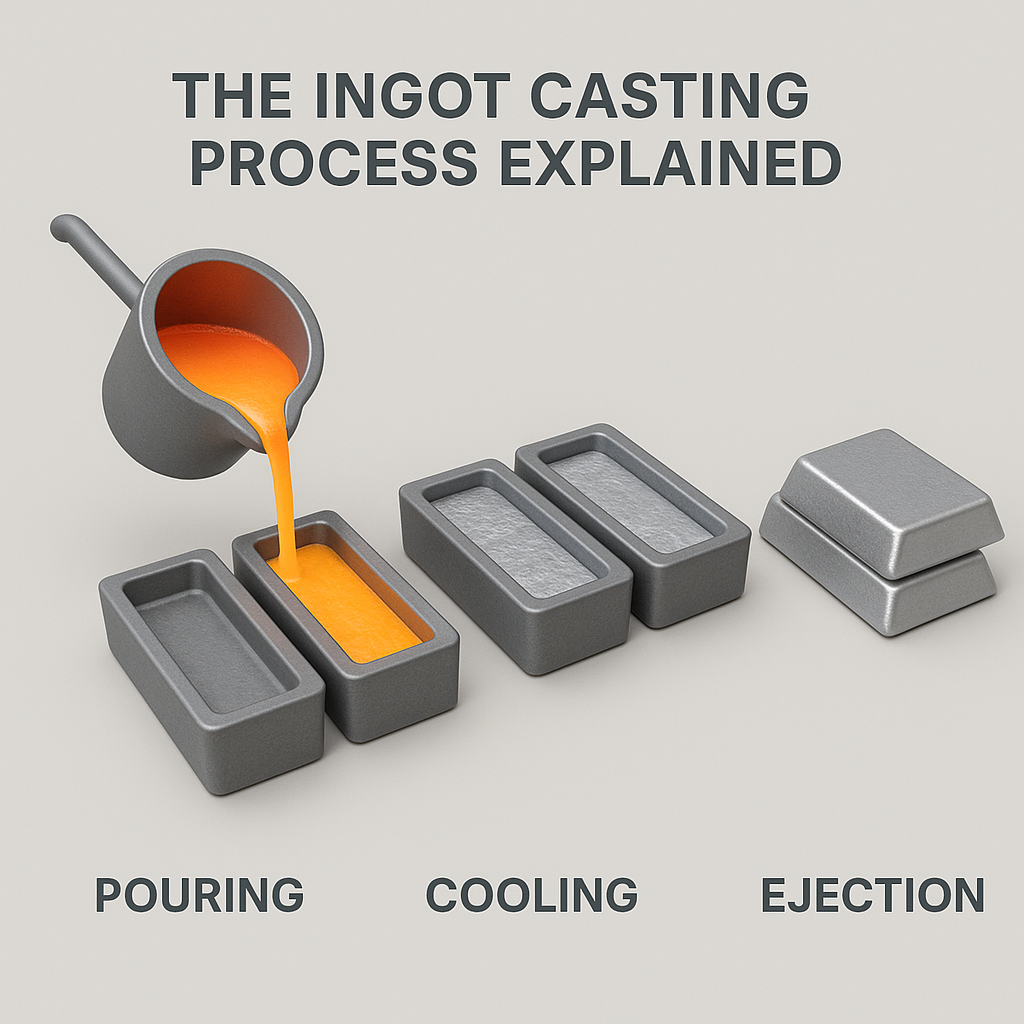Sourcing the right aluminum parts for industrial applications can be difficult without understanding the foundational manufacturing processes. Choosing the wrong type of ingot or process leads to material failures, budget overruns, and production delays that hurt your bottom line. This guide details the A-to-Z of casting aluminum ingots. We explain everything from raw material processing to industrial applications so you can make smarter procurement choices.
1. What is casting aluminum ingots?

Casting aluminum ingots is the process of creating bulk blocks of aluminum, which serve as the raw material for further manufacturing.
What defines an aluminum ingot?
An aluminum ingot is a mass of relatively pure aluminum that has been cast into a specific shape for easier transport, storage, and remelting. These forms vary by size and intended use:
- Bars/Blocks: Standard, manageable shapes for general use.
- Sows: Large, heavy ingots, often weighing over 1,000 pounds.
- Pigs: Smaller ingots cast from a sow, typically for smaller furnaces.
Key terminology in ingot casting
You might be wondering about the jargon. Bauxite is the primary ore for aluminum. It’s refined into alumina (aluminum oxide) through the Bayer process. Smelting then converts alumina into molten aluminum, and dross is the layer of impurities skimmed off the top.
Key Takeaway: Ingots are the foundational building blocks for nearly all aluminum products.
| Ingot Form | Typical Size | Primary Use | |
|---|---|---|---|
| Sow | Large (1000+ lbs) | Bulk remelting by large facilities | |
| Pig | Small (30-50 lbs) | Smaller furnaces, easier handling | |
| Bar/Block | Varies | General purpose casting & fabrication |
2. How does casting aluminum ingots work?

The process of casting aluminum ingots involves extracting and refining bauxite ore into molten metal, which is then solidified into its final form.
From bauxite ore to liquid metal
First, bauxite is mined and undergoes the Bayer process to produce alumina. The alumina is then dissolved in a molten cryolite bath and subjected to electrolysis in the Hall-Héroult process. This high-energy step separates the aluminum from oxygen, yielding liquid metal ready for casting. This is foundational to methods like the investment casting process .
The direct-chill casting method
Here’s the deal: The most common method for creating high-quality ingots is Direct-Chill (DC) casting. In this semi-continuous process, molten aluminum is poured into a short, water-cooled mold. As the metal solidifies, it is slowly lowered, creating a long, continuous ingot.
Key Takeaway: It’s an energy-intensive, multi-step process from raw ore to a solid ingot.
| Step | Process Name | Description | |
|---|---|---|---|
| 1. Refining | Bayer Process | Converts bauxite ore into alumina. | |
| 2. Smelting | Hall-Héroult Process | Electrolysis turns alumina into liquid aluminum. | |
| 3. Casting | Direct-Chill (DC) Casting | Molten metal is cooled and solidified into an ingot. |
3. What aids casting aluminum ingots?

Specialized machinery aids the process of casting aluminum ingots by ensuring consistency, efficiency, and quality control.
What are vertical casting machines?
Vertical DC casters are the industry standard for producing high-purity ingots of various shapes like billets and slabs. The ingot is drawn downwards from the mold, allowing for excellent grain structure and minimal defects.
What are horizontal casting machines?
But here’s the kicker… horizontal casters are often used for secondary (recycled) aluminum production and for casting smaller, specialized shapes. Molten metal flows horizontally into a cooled mold, making it a continuous and often more space-efficient operation.
Key Takeaway: The choice of machine depends on the desired ingot shape, size, and purity requirements.
| Feature | Vertical Casting Machine | Horizontal Casting Machine | |
|---|---|---|---|
| Orientation | Vertical (downward draw) | Horizontal | |
| Primary Use | High-purity billets, slabs | Secondary aluminum, specialized shapes | |
| Advantage | Superior grain structure | Continuous process, space-efficient |
4. Why are there two types of casting aluminum ingots?

The two types of casting aluminum ingots, primary and secondary, exist to serve different needs regarding purity, cost, and environmental impact.
Understanding primary aluminum ingots
Primary ingots are produced from virgin bauxite ore, resulting in very high purity (99.7%+). This quality is critical for demanding applications like aerospace components and high-performance automotive parts where strength and consistency are non-negotiable.
The role of secondary aluminum ingots
Secondary ingots are made by remelting recycled aluminum scrap. This process is significantly cheaper and uses up to 95% less energy. It’s an excellent choice for general Aluminum Casting applications where minor impurities won’t affect performance.
Key Takeaway: Your project’s budget and performance needs will determine whether you need primary or secondary aluminum.
| Factor | Primary Aluminum | Secondary Aluminum | |
|---|---|---|---|
| Source | Bauxite Ore (Virgin) | Recycled Scrap | |
| Purity | High (99.7%+) | Varies (Lower) | |
| Cost | Higher | Lower | |
| Environmental Impact | High Energy Use | Low Energy Use |
5. Where is casting aluminum ingots used?

Casting aluminum ingots provides the foundational material for a vast range of industrial and consumer products due to aluminum’s lightweight, strong, and corrosion-resistant properties.
What are its automotive applications?
In the automotive industry, aluminum helps reduce vehicle weight, which improves fuel efficiency. It’s used for engine blocks, wheels, chassis components, and body panels.
How is it used in construction?
This is where it gets interesting… Aluminum’s resistance to corrosion makes it perfect for outdoor applications like window frames, roofing, and structural facades. It’s also used in the Marine Hardware Industry for the same reason.
Key Takeaway: From cars to buildings, aluminum ingots are the starting point for countless modern products.
| Industry | Primary Use Case | Key Aluminum Property | |
|---|---|---|---|
| Automotive | Engine blocks, body panels | Lightweight | |
| Construction | Window frames, facades | Corrosion Resistance | |
| Aerospace | Fuselage, wings | Strength-to-Weight Ratio | |
| Packaging | Cans, foils | Malleability, Recyclability | |
| Electronics | Casings, heat sinks | Thermal Conductivity |
6. How do you test casting aluminum ingots?

Testing casting aluminum ingots is a critical step to verify their chemical composition and structural integrity, ensuring they meet project specifications.
What is spectrometric analysis?
Spectrometry is a lab technique used to confirm the exact alloy composition. It vaporizes a tiny sample of the ingot and analyzes the light spectrum it emits, revealing the precise percentage of elements like silicon, magnesium, and iron. This is a key part of professional Material Testing .
Why is physical inspection performed?
What’s the bottom line? Physical checks are performed to spot surface defects like cracks, porosity, or inclusions. Non-destructive methods like ultrasonic testing can also be used to find internal flaws without damaging the ingot.
Key Takeaway: Rigorous testing ensures that the ingots you receive meet the exact grade and quality standards required.
| Test Type | What It Checks For | Method | |
|---|---|---|---|
| Spectrometric Analysis | Chemical composition, alloy grade | Optical Emission Spectrometer | |
| Physical Inspection | Surface cracks, porosity, dross | Visual inspection, dye penetrant | |
| Ultrasonic Testing | Internal flaws, voids | High-frequency sound waves |
7. Is casting aluminum ingots eco-friendly?

The eco-friendliness of casting aluminum ingots depends entirely on whether it is primary or secondary production.
The energy of primary production
Primary aluminum production from bauxite ore is extremely energy-intensive, consuming a large amount of electricity and generating significant greenhouse gases.
How does recycling change the equation?
Now, you might be thinking… about recycling. Secondary production, which uses recycled aluminum scrap, is the game-changer. It consumes up to 95% less energy than primary production, drastically cutting the carbon footprint and making aluminum one of the most sustainable materials available when recycled.
Key Takeaway: Recycling is the key to aluminum’s sustainability.
| Production Type | Energy Usage (vs. Primary) | CO2 Emissions (vs. Primary) | |
|---|---|---|---|
| Primary | 100% | 100% | |
| Secondary | ~5% | ~5% |
8. What are hurdles in casting aluminum ingots?

The main hurdles in casting aluminum ingots involve managing impurities and precisely controlling the solidification process to avoid defects.
How do you manage impurities?
Impurities like dross (oxides) must be skimmed from the molten metal before casting. If not removed, they can create weak spots and inclusions in the final ingot.
Controlling the solidification process
Improper cooling rates can cause issues like cracking, porosity (tiny holes), and an inconsistent grain structure. This affects the metal’s mechanical properties, so processes like Casting Heat Treatment are sometimes used to refine the structure post-casting.
Key Takeaway: Proper process control is essential to prevent defects that compromise ingot quality.
| Casting Defect | Primary Cause | |
|---|---|---|
| Porosity | Trapped gas during solidification | |
| Cracking | Improper cooling rates, thermal stress | |
| Inclusions | Dross or other impurities in the melt |
9. What’s next for casting aluminum ingots?

The future of casting aluminum ingots is focused on improving technological efficiency and embracing a fully circular economy.
How is technology advancing?
Advancements include more efficient furnaces, automated casting machinery for better consistency, and powerful simulation software. This software allows foundries to model the casting process digitally to predict and prevent defects before any metal is poured.
The push for a circular economy
What does this all mean? There is a massive global push to increase aluminum recycling rates. This involves developing better technologies for sorting different aluminum alloys from scrap, which will improve the quality and usability of secondary ingots.
Key Takeaway: The future is smarter, more automated, and overwhelmingly focused on recycling.
| Future Trend | Expected Impact on Industry | |
|---|---|---|
| Automation | Improved consistency and safety | |
| Simulation Software | Reduced defects and faster development | |
| Advanced Recycling | Higher quality secondary aluminum, less waste |
10. What affects casting aluminum ingots cost?

The cost of casting aluminum ingots is primarily driven by raw material prices and energy costs, which differ for primary and secondary production.
How do raw material prices factor in?
The price of primary ingots is closely tied to the global aluminum price on the London Metal Exchange (LME) and the cost of alumina.
What is the impact of energy costs?
So, what’s the real story? Electricity is a major cost component for primary smelting. For secondary production, natural gas prices for remelting furnaces are a more significant factor, though the overall energy cost is far lower.
Key Takeaway: Market fluctuations in commodities and energy directly influence the price you pay for ingots.
| Cost Component | Primary Ingots | Secondary Ingots | |
|---|---|---|---|
| Raw Material | Alumina, Bauxite | Aluminum Scrap | |
| Energy | High (Electricity) | Low (Natural Gas) | |
| Market Driver | LME Aluminum Price | Scrap Availability/Price |
Conclusion
Casting aluminum ingots is a foundational process for countless industries. Understanding the differences between primary and secondary production, along with key quality checks, empowers you to source the right material for your project’s performance and budget needs. At PrecisionVast, we are dedicated to transforming complex designs into high-quality cast components that meet the strictest industry standards. Ready to start your next project? Get a Quote from PrecisionVast today for your aluminum casting requirements.
Frequently Asked Questions (FAQ)
Q1: Can I request a custom aluminum alloy for my ingots?Yes, producers can create custom alloys by adding specific elements like silicon, magnesium, or copper during the melting process to meet unique performance requirements.
Q2: What’s the best ingot type for high-stress automotive parts?Primary aluminum ingots are typically preferred for high-stress applications due to their high purity and consistent mechanical properties.
Q3: How does the quality of secondary ingots compare to primary?While primary ingots offer the highest purity, high-quality secondary ingots can meet or exceed many industry standards, especially with advanced sorting and refining techniques.
Q4: What are the main differences between ingot casting and other casting methods?Ingot casting creates bulk raw material. Other methods, like investment or die casting, create near-net-shape parts directly from molten metal.
Q5: Can you handle both small-batch and large-volume ingot orders?Yes, most modern foundries and suppliers can accommodate orders ranging from small, specialized batches to large-scale industrial production runs.



